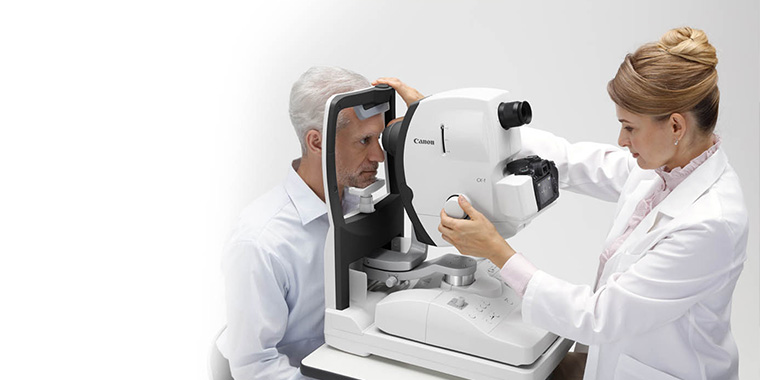Andalusia Eye Center: Introducing Vision Look After Area Health
Wiki Article
Unlocking the Keys of Glaucoma Medical Diagnosis and Treatment for Optimal Eye Wellness
Glaucoma, a group of eye conditions that can bring about irreversible vision loss, influences countless people worldwide. While improvements in the field of ophthalmology have widened our understanding of this complicated disease, much continues to be to be uncovered regarding its detailed diagnosis and therapy. cardiologist andalusia. By unwinding the intricacies of glaucoma monitoring, we can potentially enhance the high quality of care given to individuals, guaranteeing optimum eye health end resultsOverview of Glaucoma
Glaucoma, a team of eye conditions that harm the optic nerve, typically bring about vision loss, is a major and possibly sight-threatening condition. It is characterized by enhanced intraocular stress (IOP), which can cause damages to the optic nerve fibers. Glaucoma is frequently described as the "quiet thief of sight" due to the fact that it can advance gradually with no visible signs and symptoms until substantial vision loss takes place. There are several types of glaucoma, with key open-angle glaucoma being one of the most typical kind. This type develops slowly and is pain-free, influencing the field of vision initially.
Kinds Of Glaucoma
Provided the different indications and severity of the condition, recognizing the unique types of glaucoma is critical for efficient medical diagnosis and management. There are two primary kinds of glaucoma: open-angle glaucoma and angle-closure glaucoma. Open-angle glaucoma, additionally referred to as chronic glaucoma, is the most usual type and develops slowly over time. This type is identified by the steady blocking of the drainage canals in the eye, leading to increased intraocular stress and optic nerve damages. On the other hand, angle-closure glaucoma, likewise referred to as acute glaucoma, takes place when the iris obstructs the water drainage angle of the eye suddenly, creating a fast rise in intraocular stress. This type calls for instant medical attention to stop vision loss.Moreover, within these main groups, there are subtypes such as normal-tension glaucoma, pigmentary glaucoma, and additional glaucomas, each with its one-of-a-kind causes and danger factors - neurologist andalusia. Appropriate identification of the specific kind of glaucoma is important for tailoring a reliable treatment plan to manage the problem and maintain vision
Diagnostic Strategies
To accurately detect glaucoma and identify one of the most ideal training course of therapy, ophthalmologists use a range of diagnostic methods. Among the key approaches used is tonometry, which measures the stress inside the eye. Elevated intraocular stress is a crucial sign of glaucoma. One more important examination is perimetry, which examines the aesthetic field to discover any potential loss of outer vision-- a common early indicator of glaucoma. Ophthalmoscopy is also frequently used to take a look at the optic nerve for indicators of damage or problems. Optical comprehensibility tomography (OCT) is an advanced imaging strategy that gives thorough cross-sectional photos of the retina, permitting very early detection and surveillance of glaucoma development. Additionally, gonioscopy is used to examine the eye's drain angle, aiding in determining the kind of glaucoma existing. By integrating these diagnostic devices, reference ophthalmologists can properly diagnose glaucoma and tailor therapy plans to preserve clients' eye health.Treatment Alternatives

For even more sophisticated or extreme cases of glaucoma, surgical interventions like laser look at these guys trabeculoplasty or traditional surgical treatment may be required to enhance liquid drain. In addition, minimally invasive glaucoma surgeries (MIGS) have actually obtained appeal as they offer a much less invasive option with quicker recovery times. It is essential for individuals with glaucoma to stick to their prescribed therapy regimen and go to regular follow-up appointments to keep an eye on the effectiveness of the selected therapy plan and make any essential adjustments.
Preventive Procedures
Regular surveillance of eye wellness and early discovery of threat aspects play a vital duty in applying effective preventative actions against glaucoma. Individuals with a family background of glaucoma or those over the age of 60 need to especially prioritize normal eye examinations to capture any type of signs of the problem early on. Furthermore, keeping a healthy way of life through routine workout and a well balanced diet plan can aid reduce the danger of developing glaucoma.One more secret safety net is to avoid long term use corticosteroid medications, as these have been connected to a raised threat of glaucoma. Furthermore, securing the eyes from injury by using appropriate glasses during risky activities and preventing eye trauma can help protect against the onset of glaucoma.
Education and understanding regarding glaucoma are also necessary safety nets. By recognizing the risk elements, symptoms, and importance of regular eye tests, individuals can take positive steps to preserve their eye wellness and identify glaucoma in its onset. By incorporating these preventive measures right into everyday habits, my link people can dramatically minimize their risk of developing glaucoma and keep ideal eye health.
Verdict

There are numerous types of glaucoma, with key open-angle glaucoma being the most typical form. There are two primary kinds of glaucoma: open-angle glaucoma and angle-closure glaucoma - eye center andalusia. Open-angle glaucoma, likewise known as chronic glaucoma, is the most common form and develops gradually over time. On the various other hand, angle-closure glaucoma, additionally referred to as acute glaucoma, takes place when the iris blocks the water drainage angle of the eye all of a sudden, creating a fast rise in intraocular pressure. By recognizing the danger aspects, symptoms, and value of routine eye tests, individuals can take positive actions to preserve their eye health and wellness and spot glaucoma in its very early stages
Report this wiki page